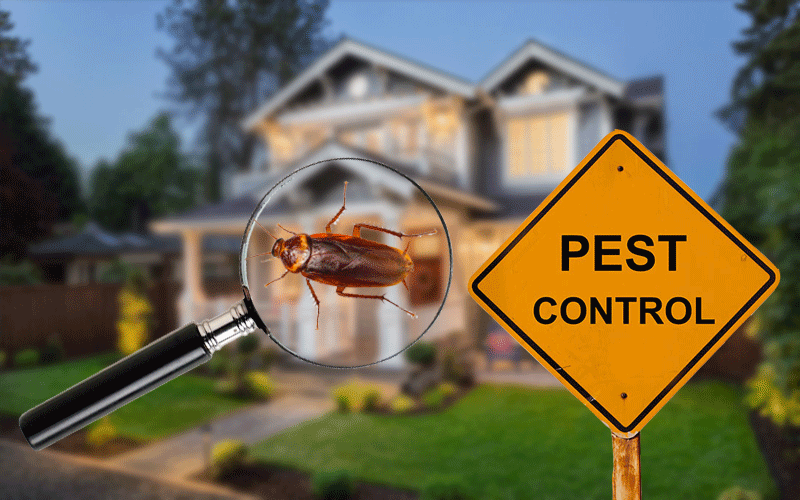Efficient A1 Bed Bug Treatment in Charlotte - Safe and Proven Techniques
Bed Insect Therapy Breakdown: Comparing Chemical Vs. Non-Chemical Solutions
In the world of pest control, specifically when dealing with the relentless issue of bed bugs, the selection between chemical and non-chemical treatment solutions can be an essential one. Both strategies provide unique advantages and disadvantages, influencing factors such as effectiveness, security considerations, and total expense. By checking out the nuanced information of each approach, a more clear understanding of which course to go after in dealing with a bed bug infestation can be obtained.
Effectiveness of Chemical Treatments
Chemical treatments for bed bug problems have actually been extensively acknowledged for their quick and potent efficacy in getting rid of these bugs. When considering the effectiveness of chemical treatments, it is important to recognize that they can offer a fast and comprehensive option to a bed bug issue.
In addition, chemical treatments have the advantage of providing recurring results, implying that they can proceed to get rid of bed pests even after the preliminary application. This recurring action is particularly beneficial in combating any kind of prospective re-infestations. Furthermore, the fast action of chemical treatments can bring relief to individuals dealing with serious bed pest problems, allowing them to gain back control of their home swiftly.
Safety Interest In Chemical Solutions
One vital facet that needs mindful factor to consider when making use of chemical options for bed bug therapy is ensuring the safety and security of residents and the environment. Exposure to particular chemicals utilized in bed pest treatments can lead to respiratory problems, skin inflammation, or other adverse reactions, especially in individuals with pre-existing problems or sensitivities.
Moreover, the environmental influence of chemical options is an additional considerable consideration. Some chemicals utilized in bed bug therapies might be harmful to advantageous bugs, wildlife, and environments if they leach right into the dirt or water supply. It is vital to make use of chemical treatments judiciously, complying with safety and security guidelines, and taking into consideration much less hazardous choices to alleviate these risks and make certain the safe and effective administration of bed pest invasions.
Benefits of Non-Chemical Strategies
Thinking about the prospective safety concerns and ecological influence associated with chemical solutions for bed pest therapy, checking out non-chemical strategies provides an appealing option with several unique advantages. Non-chemical approaches provide a more secure option for households, particularly those with children, family pets, or people conscious severe chemicals. These methods get rid of the threats of exposure to toxic compounds, lowering the capacity for unfavorable wellness impacts. In addition, non-chemical treatments are eco pleasant, as they do not add to air or water pollution, making them a sustainable choice for insect control.
In addition, non-chemical options can be reliable in targeting bed bugs, including hard-to-reach areas where chemical treatments may not penetrate - A1 charlotte bed bug exterminator. Techniques such as warmth treatment, vacuuming, heavy steam cleaning, and cushion coverings offer extensive eradication without the usage of hazardous Read Full Article chemicals.
Limitations of Non-Chemical Treatments

In addition, non-chemical therapies website here typically require several applications to accomplish effective eradication. This can be time-consuming and might not always guarantee total removal of all bed bugs and their eggs, particularly in hard-to-reach or hidden places.
In addition, the success of non-chemical therapies heavily relies upon appropriate execution and thoroughness, which can be challenging for individuals without specialist experience. Inadequate application of non-chemical techniques may cause incomplete removal, resulting in persistent infestations and the demand for additional therapies.
For that reason, while non-chemical therapies have their advantages, it is necessary to acknowledge these constraints and consider them when figuring out the most efficient technique for managing bed bug problems.
Expense Contrast: Chemical Vs. Non-Chemical Options
Provided the limitations connected with non-chemical treatments, a crucial aspect to evaluate in the context of bed insect management is the cost comparison in between chemical and non-chemical options. Chemical treatments normally involve the application of pesticides by professionals, which can vary from $250 to $900 per room, relying on the extent of the invasion and the dimension of the location to be treated. On the other hand, non-chemical treatments like warm treatment or steam can be extra pricey, with prices ranging from $1,000 to $6,000 for an entire home. While the first cost of chemical therapies might seem reduced, multiple treatments might be required to completely eliminate the invasion, possibly boosting the overall expense. On the other hand, non-chemical alternatives may give a much more sustainable and green option, although they can be cost-prohibitive for some individuals. Ultimately, when taking into consideration the price of bed insect treatment choices, it is necessary to consider the in advance costs against the performance and long-term sustainability of the picked technique.
Verdict

Considering the possible security worries and environmental effect connected with chemical solutions for bed insect therapy, checking out non-chemical methods offers an appealing option with a number of unique benefits.Offered the limitations associated with Visit Your URL non-chemical therapies, a vital element to evaluate in the context of bed pest monitoring is the cost comparison in between chemical and non-chemical alternatives. In contrast, non-chemical therapies like heat therapy or steam can be much more expensive, with costs ranging from $1,000 to $6,000 for a whole home. While the initial expense of chemical treatments might seem reduced, multiple therapies may be required to totally remove the infestation, possibly raising the general price.In conclusion, when contrasting chemical and non-chemical bed insect treatment choices, it is crucial to consider performance, safety and security, advantages, constraints, and expense.